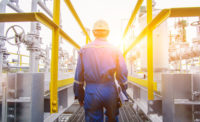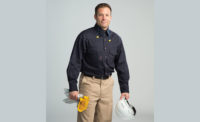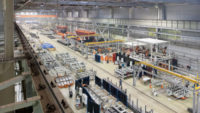More than 5,000 workers sustained a fatal injury in American workplaces in 2021. According to the Bureau of Labor Statistics (BLS), this figure is equal to one person every 101 minutes. While the number of fatal injuries has increased compared to 2020, it remains below pre-pandemic levels. That distinction may provide a level of comfort for some, but it does not take away from the fact that many of those accidents, injuries, and illnesses are preventable.
Personal protective equipment (PPE) is one of the first lines of defense for American workers. However, to be effective, PPE has to be used consistently and correctly. In this article, we take a closer look at how the use of PPE can improve workplace safety across various industries.
How to select appropriate PPE equipment for your business
The Occupational Safety and Health Administration (OSHA) defines PPE as equipment that is used to “minimize exposure to hazards that cause serious workplace injuries or illnesses.” To select appropriate PPE for their teams, employers need to start by identifying these hazards.
Common workplace hazards include chemical substances, radiation, but also physical, mechanical, or electrical hazards. Protecting workers against those could require full body suits in extreme cases, and some may remember seeing so-called ‘hazmat’ suits more frequently during the first year of the pandemic.
More commonly, however, choosing appropriate PPE could include hard hats, solid shoes, gloves, and safety glasses on construction sites, for example. Workers who need to spend time exposed to high levels of noise may need ear defenders, and those in particularly dusty environments could benefit from face masks or respirators.
Properly fitted uniforms are another form of PPE. Uniforms identify team members as part of the company. In addition, they also protect them from the elements, including excessive heat or cold. Workers who are expected to work outdoors even when it rains should be issued with a waterproof or water-resistant uniform.
The environmental conditions workers are likely to become exposed to will dictate what equipment is needed.
Establishing effective PPE policies and procedures
Once your company’s leadership team has signed off on the necessary PPE items for your teams, it is time to establish effective policies and procedures for using the equipment.
These procedures may include definitions of the situations and circumstances when PPE needs to be worn and how to don and doff equipment. For example, if gloves have come in contact with contaminated or otherwise dangerous substances, they need to be removed in a manner that avoids spreading any of the substances on them.
PPE procedures and policies may also outline who is responsible for issuing workers with the relevant equipment before they enter a potentially dangerous site. In addition, these policies should make it clear what happens when suitable equipment is unavailable. Work should be stopped until suitable replacements arrive without workers losing out on their pay.
Understanding when PPE becomes mandatory
Most professions requiring PPE involve tasks where protective equipment is mandatory and others when it is unnecessary. Here is an example from the medical field: a nurse may greet patients and enquire about their symptoms without wearing gloves. Once the nurse decides that a hands-on examination of a wound is necessary, they will don gloves to protect themselves and the patient. Once the examination is complete, they will dispose of the gloves safely in a medical waste bin.
Understanding when the need for PPE arises and which jobs can be done without protective gear is critical to keeping workers safe. In this context, companies are responsible for protecting their employees and their teams by training site managers and establishing a safety-oriented culture.
Perform regular inspections and maintenance
Not all PPE is as simple and straightforward as protective gloves or hard hats. Respirators and full body suits can incorporate sensitive technology that requires regular maintenance.
Leadership teams need to ensure that personal protective equipment maintenance is scheduled and prioritized just as other equipment maintenance. Aside from showing that this business cares for its employees, this approach ensures that the company cannot be held liable for a lack of protective equipment in case of an accident or illness.
Skipping maintenance cycles or not planning them at all can not only lead to costly claims. In the worst case, the company’s management team may have to accept responsibility for the avoidable death or permanent injury of a team member. While not all cases of attempting to save money on maintenance end this dramatically, avoiding regular maintenance usually leads to higher expenses in the long run.
Training employees in the correct use of PPE
No matter the industry or individual job role, many employees attend first aid training at some point in their careers. If they never have to use their skills and never practice them again, these skills will eventually be lost.
The same happens to proper PPR usage. Consider a person who has been issued with a respirator for situations in which they become exposed to contaminated air. They have had training in the correct use of the gear but didn’t need to use it for several months. Even if the company took care of regular maintenance, it’s possible that the individual doesn’t remember every detail of their training. When that happens, they may not only use the equipment ineffectively but even put themselves in danger.
Effective training programs in the use of PPE should never be a one-off event. Instead, HR and health and safety teams need to collaborate to create the most appropriate training schedule for the business.
Training doesn’t need to take days or even hours. Remember the face masks employees were encouraged to wear during the pandemic? Understanding how to wear those masks correctly only required a few minutes of explanation. Still, many people benefited from regular reminders to continue using the masks correctly.
Conclusion
PPE comes in countless variations depending on the nature of the business and the potential hazards workers may become exposed to. In any case, PPE can be a powerful tool in the prevention of workplace injuries or deaths. Aside from selecting the equipment itself, employers need to establish policies and procedures and train their teams in the proper application of the equipment.



